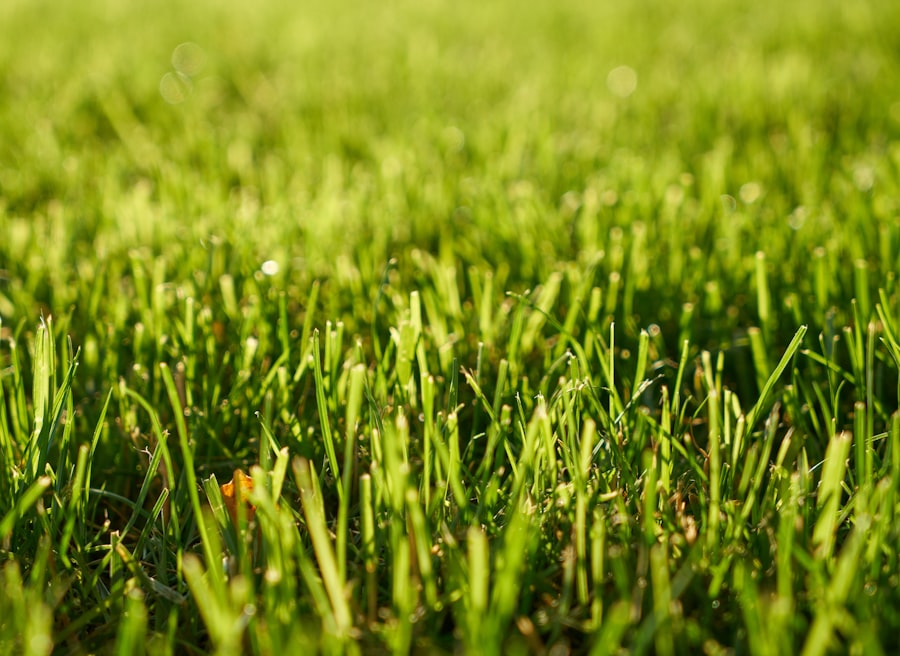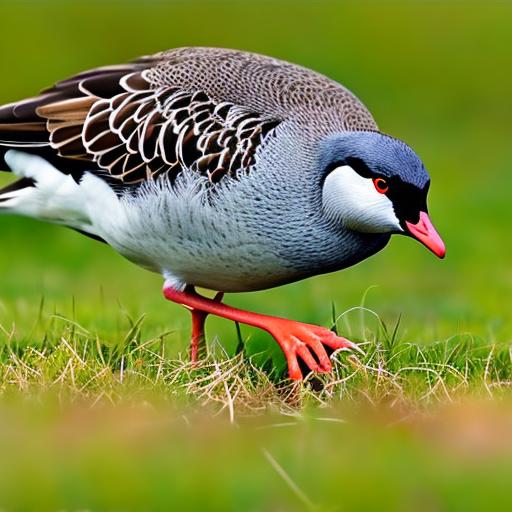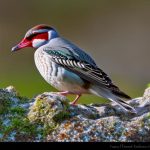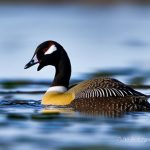Geese have become an increasing problem in outdoor spaces, causing damage to landscapes and posing health risks to humans. As a result, finding effective and humane methods to deter geese from settling in these areas has become a priority. One such method that has gained popularity is aerating. Aerating involves creating small holes in the ground to improve soil health, but it also has the added benefit of making an area less attractive to geese. In this article, we will explore the behavior of geese, the negative impact they can have on outdoor spaces, and how aerating can be used as a sustainable and humane solution to geese management.
Key Takeaways
- Aerating is a method used to keep geese away from outdoor spaces.
- Understanding the behavior of geese is important in deterring them from settling in an area.
- Aerating has several benefits in deterring geese, including reducing the availability of food and water.
- Different types of aerators have varying effectiveness in keeping geese away.
- Factors to consider when choosing an aerator for geese control include the size of the area and the type of soil.
Understanding the behavior of geese and their impact on outdoor spaces
Geese are attracted to certain areas for a variety of reasons. They are herbivores and are drawn to areas with lush vegetation, such as parks, golf courses, and residential lawns. These areas provide ample food sources for geese, including grass, plants, and even crops. Geese are also attracted to bodies of water, as they use them for drinking, bathing, and nesting. This is why lakes, ponds, and rivers often become hotspots for geese activity.
While geese may seem harmless at first glance, their presence can have a negative impact on outdoor spaces. They are known for their droppings, which can accumulate quickly and create unsightly messes. Not only are these droppings unpleasant to look at, but they also pose health risks to humans. Geese droppings can contain harmful bacteria such as E.coli and Salmonella, which can cause illnesses if ingested or come into contact with open wounds.
The benefits of aerating in deterring geese from settling in an area
Aerating can make an area less attractive to geese by disrupting their preferred habitat conditions. When an area is aerated, the soil becomes less compacted, allowing for better water drainage and root growth. This results in healthier grass and vegetation, which geese find less appealing. Additionally, the small holes created during the aerating process can make it difficult for geese to walk or graze comfortably, further deterring them from settling in the area.
Using aerating as a method to deter geese is not only effective but also sustainable and humane. Unlike other methods such as trapping or culling, aerating does not harm or kill the geese. It simply makes the area less attractive to them, encouraging them to find alternative habitats. This is important as geese are protected under various wildlife conservation laws, and it is essential to find non-lethal methods to manage their populations.
Different types of aerators and their effectiveness in keeping geese away
There are several types of aerators available for geese control, each with its own level of effectiveness. One common type is the spike aerator, which consists of solid spikes that penetrate the ground and create holes. Spike aerators are effective in breaking up compacted soil and improving water drainage, making them a good choice for deterring geese.
Another type of aerator is the plug aerator, which removes small plugs of soil from the ground. This creates larger holes compared to spike aerators and can be more effective in deterring geese. The larger holes make it even more difficult for geese to walk or graze comfortably, discouraging them from settling in the area.
Factors to consider when choosing an aerator for geese control
When choosing an aerator for geese control, there are several factors to consider. The size of the area is an important consideration, as larger areas may require more powerful or efficient aerators. Additionally, the type of soil in the area should be taken into account. Some aerators may be more effective on certain soil types, such as clay or sandy soil. It is important to choose an aerator that is suitable for the specific conditions of the area to maximize its effectiveness in deterring geese.
Best practices for aerating to keep geese away

To effectively deter geese using an aerator, there are several best practices to follow. Timing is crucial, as aerating should be done before geese arrive in the area. Geese typically migrate during the spring and fall, so aerating should be done in the late winter or early spring to disrupt their preferred habitat conditions. Additionally, aerating should be done on a regular basis to maintain its effectiveness. This can vary depending on the specific area and its geese population, but aerating every few months or at least once a year is recommended.
The role of maintenance in ensuring the continued effectiveness of aerating
Maintenance is essential to ensure the continued effectiveness of an aerator in deterring geese. Regular inspections should be conducted to check for any damage or wear and tear on the aerator. Any necessary repairs or replacements should be made promptly to prevent any decrease in its effectiveness. Additionally, it is important to keep the aerator clean and free from debris that may hinder its performance. Regular cleaning and maintenance will ensure that the aerator continues to work effectively in deterring geese.
Combining aerating with other geese control methods for maximum results
While aerating can be an effective method on its own, combining it with other geese control methods can yield even better results. One method that can be used in conjunction with aerating is the use of repellents. There are various repellents available that can deter geese from settling in an area by creating an unpleasant environment for them. These repellents can be applied to grass or vegetation and work by emitting odors or tastes that are unappealing to geese.
Another method that can be combined with aerating is habitat modification. This involves altering the landscape to make it less attractive to geese. For example, planting tall grasses or shrubs around bodies of water can create barriers that discourage geese from accessing these areas. By combining aerating with repellents or habitat modification, a more comprehensive geese management plan can be created, resulting in maximum results.
How to monitor and evaluate the success of aerating in keeping geese away
Monitoring the effectiveness of aerating in deterring geese is important to ensure its continued success. One way to monitor is by regularly inspecting the area for signs of geese activity. This can include looking for droppings, feathers, or nests. If these signs are present, it may indicate that the aerating method needs to be adjusted or combined with other methods for better results.
Another way to evaluate the success of aerating is by observing the behavior of geese in the area. If geese are seen avoiding or leaving the area after aerating has been done, it is a good indication that the method is working effectively. It is important to regularly assess and evaluate the success of aerating to make any necessary adjustments and ensure that geese are deterred from settling in the area.
Aerating as a sustainable and humane solution to geese management
In conclusion, aerating is an effective and sustainable method for deterring geese from settling in outdoor spaces. By disrupting their preferred habitat conditions, aerating makes an area less attractive to geese, encouraging them to find alternative habitats. It is a humane solution that does not harm or kill the geese, making it a preferred method for geese management.
When choosing an aerator, factors such as the size of the area and the type of soil should be considered to maximize its effectiveness. Regular maintenance and cleaning are essential to ensure the continued effectiveness of the aerator. Aerating can also be combined with other geese control methods, such as repellents or habitat modification, for maximum results.
Monitoring and evaluating the success of aerating is important to make any necessary adjustments and ensure that geese are deterred from settling in the area. By using aerating as a method to keep geese away, outdoor spaces can be protected from the negative impact of geese while maintaining a sustainable and humane approach to geese management.
If you’re looking for effective ways to keep geese away from your property, aerating your lawn might just be the solution you need. A well-aerated lawn not only promotes healthy grass growth but also makes it less attractive for geese to graze on. To learn more about the benefits of aerating and how it can help deter geese, check out this informative article on Poultry Wizard: https://poultrywizard.com/keeping-chickens/chicken-coop-interior-ideas/. While you’re there, don’t forget to explore other useful articles such as https://poultrywizard.com/keeping-chickens/turning-a-shed-into-a-chicken-coop/ for creative ideas on transforming a shed into a chicken coop, and https://poultrywizard.com/breeding-geese/how-to-care-for-goslings/ for expert tips on caring for goslings.
FAQs
What is aerating?
Aerating is the process of perforating the soil with small holes to allow air, water, and nutrients to penetrate the grass roots.
Why is aerating important?
Aerating helps to improve the health of the lawn by promoting deeper root growth, reducing soil compaction, and allowing better absorption of water and nutrients.
How does aerating keep geese away?
Aerating creates an uneven surface on the lawn, making it difficult for geese to walk and graze. Geese prefer flat, even surfaces and will avoid areas that are difficult to navigate.
When is the best time to aerate?
The best time to aerate is during the growing season when the grass is actively growing. For cool-season grasses, this is typically in the spring or fall. For warm-season grasses, it is best to aerate in the late spring or early summer.
What equipment is needed for aerating?
Aerating can be done with a manual or powered aerator. Manual aerators are typically a fork-like tool that is pushed into the soil, while powered aerators use spikes or hollow tines to penetrate the soil.
How often should I aerate my lawn?
The frequency of aerating depends on the condition of the lawn and the amount of foot traffic it receives. For heavily used lawns, it may be necessary to aerate once or twice a year. For less used lawns, once every two to three years may be sufficient.
Meet Walter, the feathered-friend fanatic of Florida! Nestled in the sunshine state, Walter struts through life with his feathered companions, clucking his way to happiness. With a coop that’s fancier than a five-star hotel, he’s the Don Juan of the chicken world. When he’s not teaching his hens to do the cha-cha, you’ll find him in a heated debate with his prized rooster, Sir Clucks-a-Lot. Walter’s poultry passion is no yolk; he’s the sunny-side-up guy you never knew you needed in your flock of friends!







